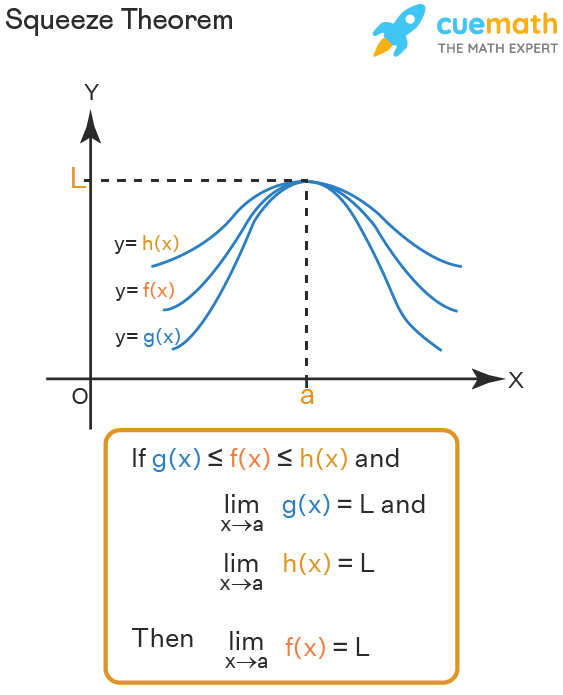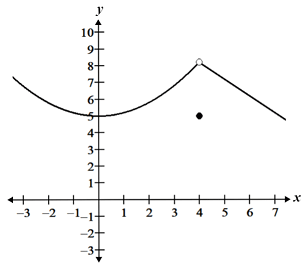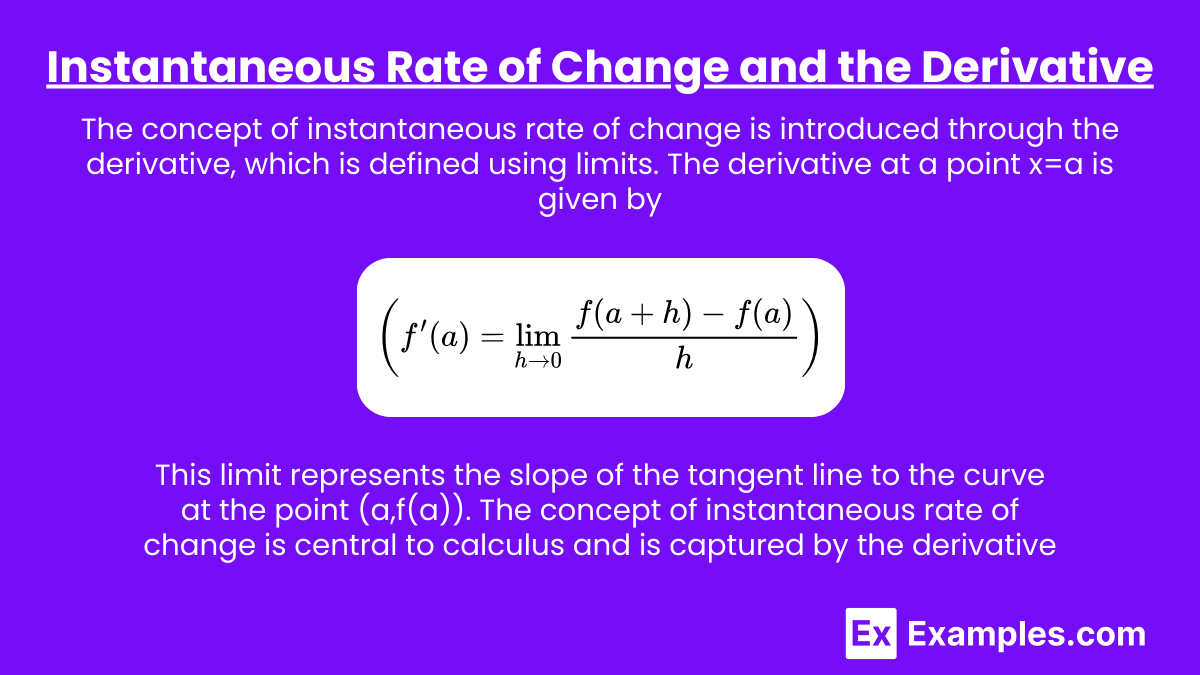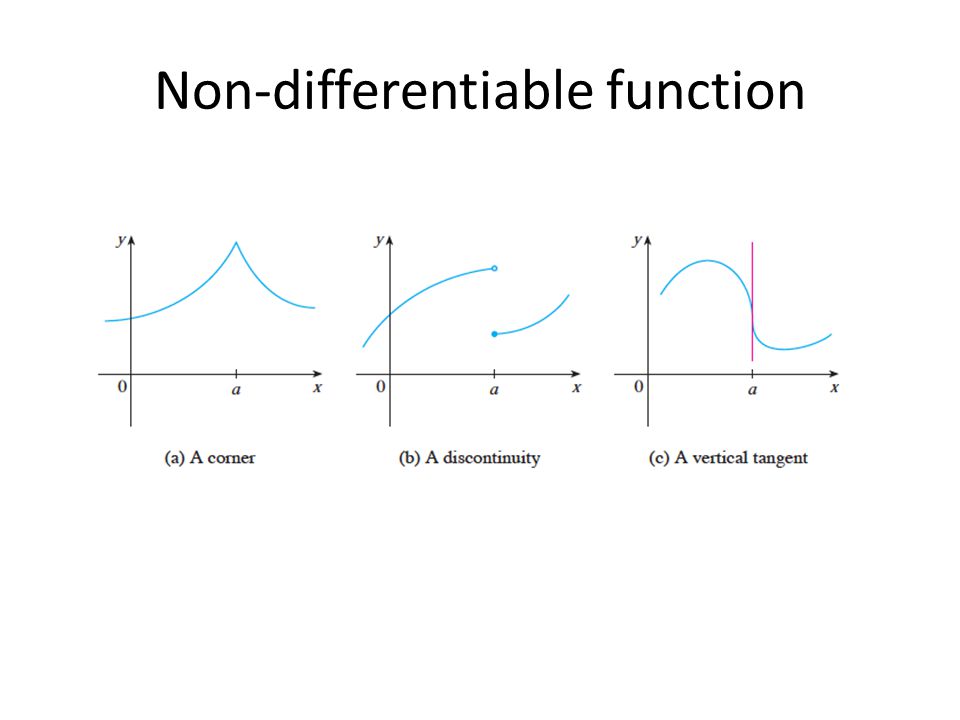AP Calculus AB Review
1/87
There's no tags or description
Looks like no tags are added yet.
Name | Mastery | Learn | Test | Matching | Spaced |
|---|
No study sessions yet.
88 Terms
lim f(x)
x→c
limit notation
limit
The value that f(x) approaches as x approaches c from the left and right sides.
Squeeze Theorem
h(x) ≤ f(x) ≤ g(x) for all x in an open interval containing c, and lim x → c h(x) =L = lim x→ c g(x), then lim x → c f(x)= L

lim f(x) = 0
x → infinity
degree of numerator < degree of denominator (horizontal asymptote)
lim f(x) = leading coefficient of numerator / leading coefficient of denominator
x → infinity
If the degrees of the numerator and denominator are equal. (horizontal asymptote)
f(x) → positive or negative infinity
degree of denominator > degree of numerator
f(x) is continuous @ x=c if
f(c) exists → no holes/asymptote
the limit f(x) exists
f(c) = limit f(x) as x → c
removable discontinuity (hole)
f(c) ≠ limit f(x) as x → c

non removable discontinuity
vertical asymptote: f(c) ≠ exist
jump: limit f(x) as x → c ≠ exist

Intermediate value theorem
If f is continuous on [a,b], then f(x) takes any value between f(a) and f(b).
derivative (instantaneous rate of change)
The slope of the tangent line to a function at a point.
Instantaneous rate of change (c+h)
limit as h → 0 f(c+h) - f(c) over h

Instantaneous rate of change (c and x)
limit as x → c f(x) - f(c) over x - c
f(x) is not continuous when
hole
asymptote
jump
sharp turn
cusp
vertical tangent line on a function

d/dx c
0
d/dx cf(x)=
c * d/dx f(x)
d/dx (f(x)+-g(x))=
d/dx f(x) +- d/dx g(x)
d/dx x^n=
nx^n-1
d/dx e^x=
e^x
d/dx lnx=
1/x
d/dx sinx =
cosx
d/dx cosx =
-sinx
d/dx tanx =
sec²x
d/dx cotx =
-csc²x
d/dx secx =
secxtanx
d/dx cscx =
-cscxcotx
product rule
fs’+sf’
quotient rule
lodhi-hidlo over lo²
Chain Rule
y’ = f’(g(x) * g’(x)
Implicit Differentiation
Differentiate both sides with/ respect to X
Collect all terms w/ dy/dx to one side and all terms w/o dy/dx to the other side.
Factor out dy/dx
Solve dy/dx by dividing
Derivative of an inverse function
(f^-1)’(b) = 1/f(‘x) (slope at inverse points are reciprocals)
d/dx(arcsin u)
u’/sqrt (1-u²)
d/dx (arccos u)
u’/-sqrt (1-u²)
d/dx (arctan u)
u’/1+u²
position s(t)
Positive is to the right /above the origin
Negative is left/below the origin
velocity v(t)
v(t) > 0 object is moving right/up
v(t) < 0 object is moving left/down
v(t) = 0 object is at rest
v(t) = s’(t)
constant velocity
means acceleration is not changing, a=0
acceleration
a(t) = v’(t) = s“(t)
speeding up
a(t) and v(t) have the same signs
slowing down
a(t) and v(t) have opposite signs
related rates
Draw a picture
Write a formula (area, volume, Pythagorean theorem)
take derivative of both sides w/ respect to time (dx/dt or dy/dt)
Plug in what you know and solve for the remaining quantity
equation of a tangent line
y-y1=m(x-x1)
L’Hospital’s Rule
If limit x approaches c f(x)/g(x) results in 0/0 or +-infinity/+-infinity, then
limit x → c f(x)/g(x) = limit x → c f’(x)/g’(x)
Mean Value Theorem
If f(x) is continuous on [a,b] and differentiable on (a,b), then there exists a value c, a<c<b, such that f’(c) = f(b) - f(a)/ b - a.
Instantaneous rate of change = average rate of change.
![<p>If f(x) is continuous on [a,b] and differentiable on (a,b), then there exists a value c, a<c<b, such that f’(c) = f(b) - f(a)/ b - a.<br><br>Instantaneous rate of change = average rate of change.</p>](https://knowt-user-attachments.s3.amazonaws.com/e88fa378-a54d-482b-8b52-19217687a2d8.jpg)
Rolle’s Theorem
If mean value theorem and f(a) = f(b), then
there exists at least on c in (a,b) such that f’© = 0

Extreme Value Theorem
If a function f(x) is continuous on [a.b], then f(x) must attain a maximum and minimum value on [a,b], which occurs at critical points or absolute extrema points. (DOES NOT NEED TO BE DIFFERENTIABLE)
First Derivative Test (relative extema)
If f’(x) > 0, f(x) is increasing
If f’(x) < 0, f(x) is decreasing
Find the critical values f’(x) = 0 or does not exist
Create a sign chart, plug in x values before, between, and after critical values into f’(x).
Candidate Test (Absolute Extrema)
Find critical values f’(x)=0 or does not exist
Make a table with critical values and given intervals
Solve for those x values in f(x)
Second Derivative
If f”(x)>0, f’(x) is increasing, f(x) is concave up
If f”(x)<0, f’(x) is decreasing, f(x) is concave down.
POI occurs when concavity changes signs and indicates f’(x) has a relative maximum.minimum
Second Derivative Test
Find critical values f’(x)=0 or does not exist
Calculate the Second Derivative: Find the function's second derivative.
Evaluate the Second Derivative at the Critical Points: Substitute each critical point into the second derivative.
Analyze sign
f”(x) < 0 → relative maximum /\
f”(x) > 0 → relative minimum v
Left Riemann Sum
∑_(i=1)^n f(x_i) * Δx = Δx[f(1)+f(3)+f(5)+f(7)]
Δx = b-a/n
Right Riemann Sum
∑ f(xᵢ) Δx = Δx[f(3+f(5)+f(7)]
If f(x) is increasing,
A left Riemann Sum gives an underestimate, and a Right Riemann Sum gives an overestimate.
If f(x) is decreasing,
A left Riemann Sum gives an overestimate, and a Right Riemann Sum gives an underestimate.
midpoint Riemann sum
∑_(i=1)^n f(Xi -1 = Xi/2) * Δx
Trapezoidal Sum
A=1/2h(b1+b2)
½ Δx [ f(1) + 2f(3) + 2f(5) + f(7)]
If f(x) is concave up,
a midpoint riemann sum gives an underestimate and a trapezoidal sum gives an overestimate
If f(x) is concave down,
a midpoint riemann sum gives an underestimate and a trapezoidal sum gives an overestimate
Antiderivative
F’(x) = f(x)
If F(x) is the antiderivative of f(x), then
∫abf(x)dx=F(b)−F(a)

If f is continuous on the interval [a,b] and F(x) = integral a → b f(t) dt, then
F’(x) = f(x)
the rate of change is proportional to the quantity
y= Ce^kt
1/b-a integral a → b f(x) dx
the average value of a continuous function f(x) on [a,b] is
Area between curves
Ar= integral a → (f(x)-g(x))dx or Ar= integral a → b (f(y) - g(y)) dy
Area of a square
s²
Area of a triangle
½ bh
Area of Equilateral Triangle
(sqrt 3 /4)s²
Area of Semicircles
½ pie r²
Area of rectangles
bh
Area of trapezoid
½ h (b1+b2)
Perpendicular to the x-axis cross-sections
v = integral a→b A(x)dx
Perpendicular to the y-axis cross-sections
v = integral a→b A(y)dy
Disk
The axis of revolution is a boundary of the enclosed region
Disk Area
pie r²
Disk radius
f(x) or the x value (distance from curve)
Disk Volume
pie integral a→b r² dx or dy
Washer
There is space between the axis of revolution and the enclosed region
Washer Area
pie(R²-r²)
Washer R radius
Furthest function minus axis of revolution
Washer r radius
closest function minus axis of revolution
Washer Volume
pie integral a→b (R²-r²) dx or dy
0
1,0
pi/6
sqrt 3/2, ½
pi/4
sqrt 2/2 sqrt 2/2
pi/3
1/2, sqrt 3/2
pi/2
0,1
pi
-1,0
3pi/2
0,-1